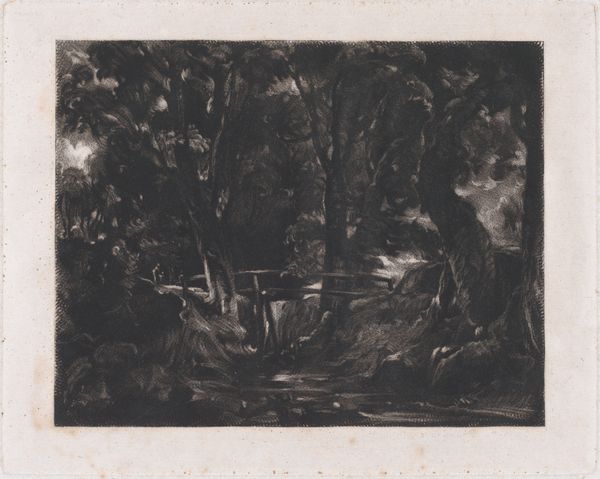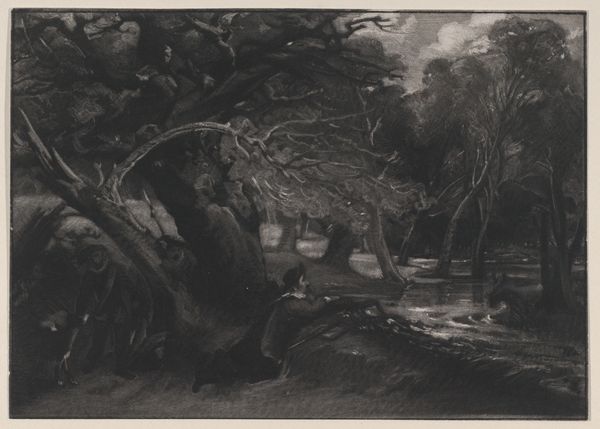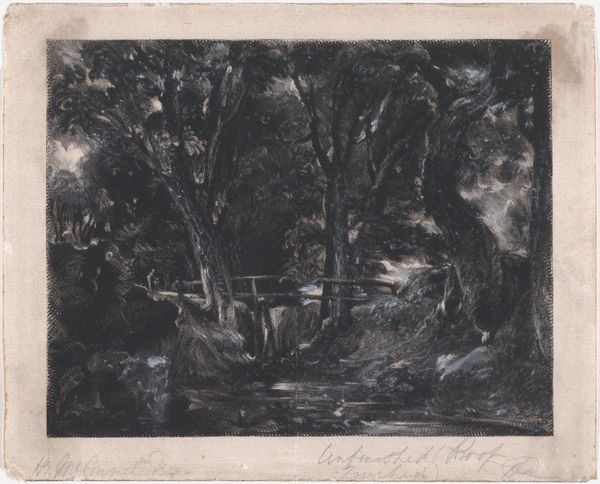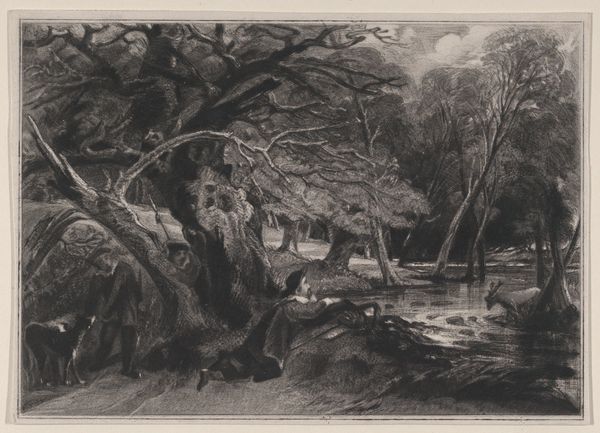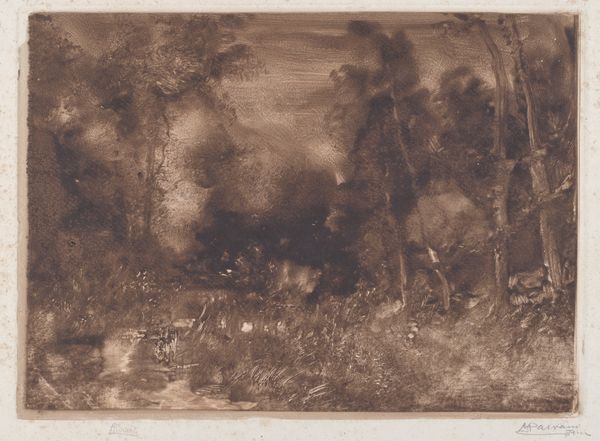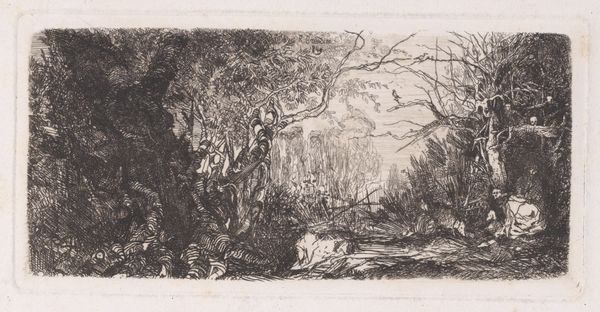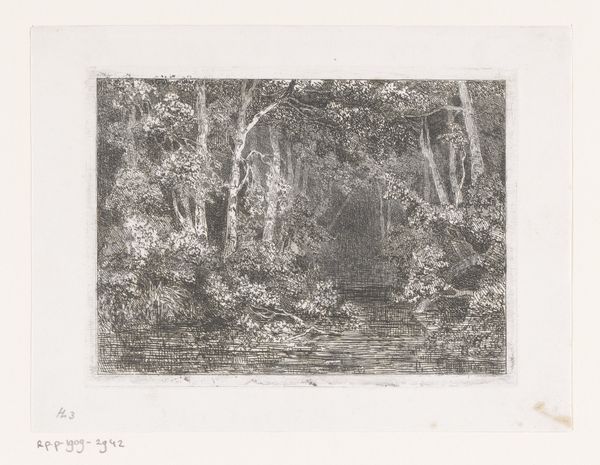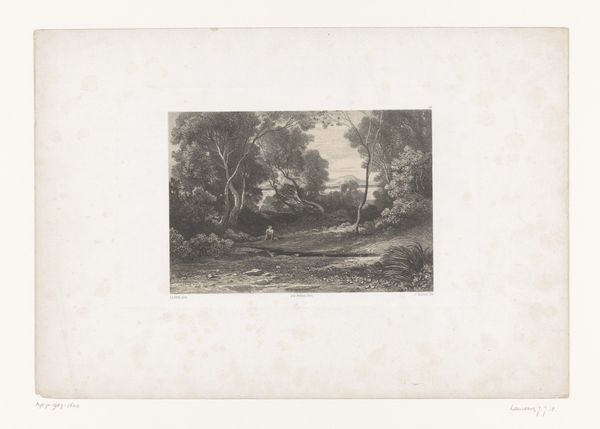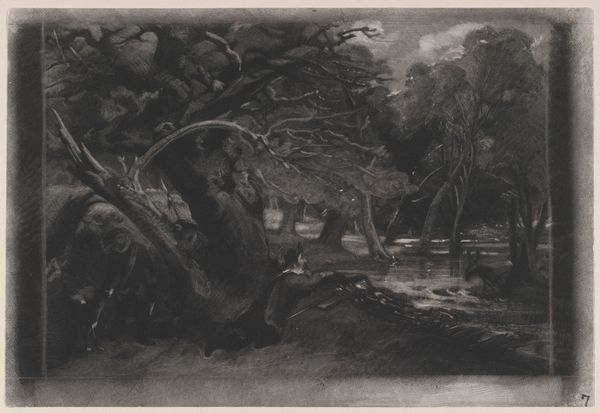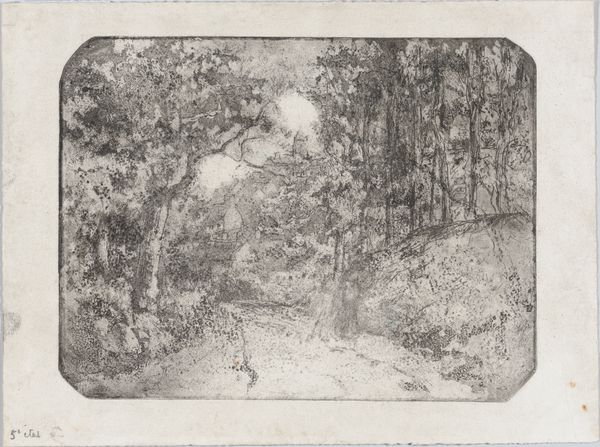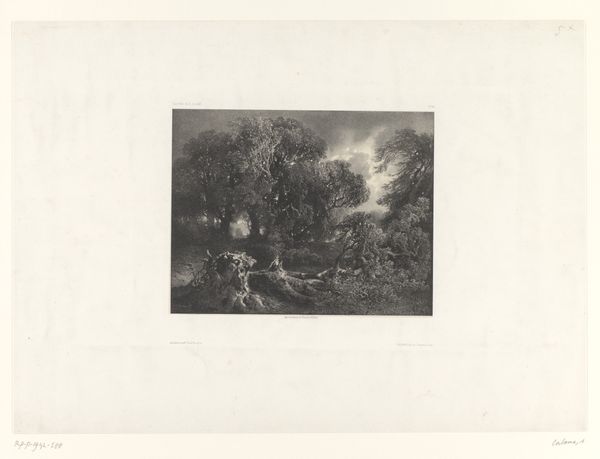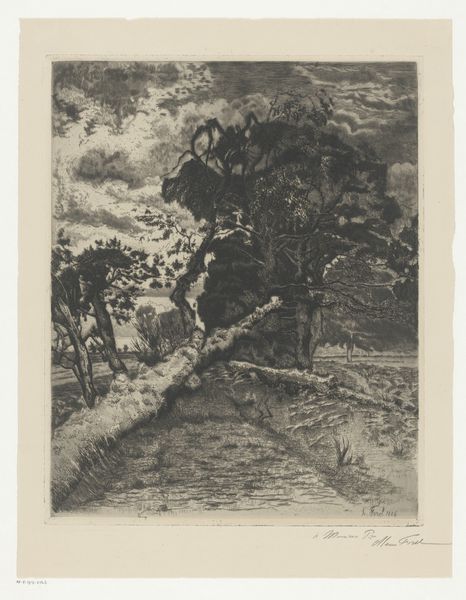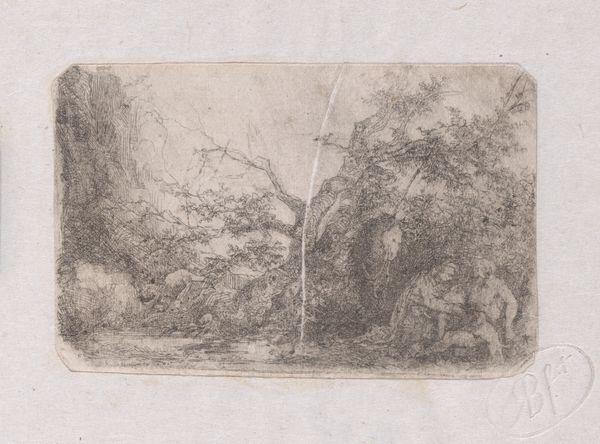
drawing, print, etching
#
drawing
# print
#
etching
#
landscape
#
romanticism
Dimensions: Image: 5 3/4 × 7 1/4 in. (14.6 × 18.4 cm) Plate: 7 1/16 × 8 7/8 in. (17.9 × 22.5 cm) Sheet: 11 9/16 × 17 3/8 in. (29.4 × 44.1 cm)
Copyright: Public Domain
Curator: This is David Lucas's etching, "A Dell, Helmingham Park, Suffolk," created around 1830. You can find it here at the Metropolitan Museum of Art. What’s your initial take on it? Editor: It's remarkably moody for a landscape! There's a real sense of dramatic darkness—an almost gothic atmosphere with that little bridge disappearing into shadow. It definitely evokes a feeling of romantic melancholy. Curator: That atmosphere is precisely what makes Lucas's work so compelling within the context of British Romanticism. The Dell at Helmingham Park became a popularized subject of art. It reflects a specific kind of Picturesque aesthetic that emphasized dramatic compositions and nature's sublime power as interpreted through human engagement. Helmingham Park represents the traditional social elite and is situated outside of major industrial growth. Editor: That makes sense, especially seeing those figures off to the side. Knowing that detail, I wonder if there's a subtle commentary here. While the landowners enjoyed manicured nature, the broader population was moving to manufacturing urban areas for factory employment? Curator: It’s tempting to read contemporary socio-economic commentary into a work that would be embraced by an emerging middle class demonstrating its access to culture and land ownership. You are pointing to some tension between representations of an ideal life. These prints and paintings provided access, either as a symbol of status for those in this class, or aspirational goals for others. But in Lucas's case, I believe he may have been focused primarily on conveying the atmospheric and textural effects within this tiny ravine using the capabilities of etching. Editor: I think that the atmospheric elements can become intrinsically linked to narratives and ideologies that were very powerful in the early nineteenth century. What were Lucas’ influences, or what can we say of this artistic and social moment in Britain? Curator: The print showcases Lucas's mastery of the etching medium but relies significantly on painting tropes developed by his colleagues during the era, for instance John Constable's paintings of natural vistas in Suffolk. He was particularly celebrated for replicating various textures within his work, and the rich gradations here show how deeply he considered the technical capacities for tone and depth. This approach suggests an intentionality beyond purely aesthetic. It’s attempting to capture, to commodify, a very specific and localized atmosphere through the reproduction of images. Editor: Right. This goes further for me. If the circulation of the Dell landscape signals a desire, perhaps it underscores what a large population never got to experience firsthand and whose livelihoods came at the expense of keeping estates like Helmingham running. Thank you for helping to untangle those complicated undercurrents here. Curator: Thank you. Looking closely allows us to examine not just the art itself, but its broader implications on contemporary culture, too.
Comments
No comments
Be the first to comment and join the conversation on the ultimate creative platform.
